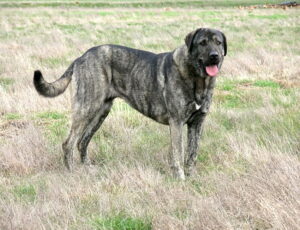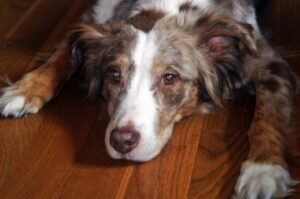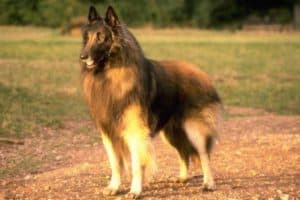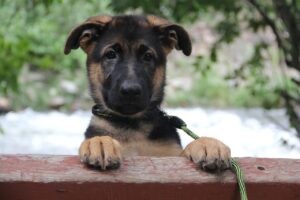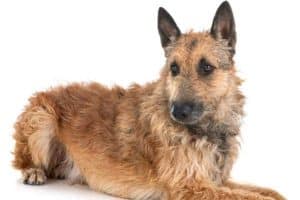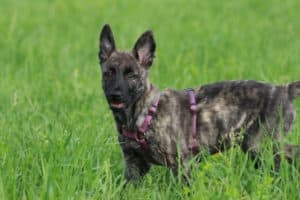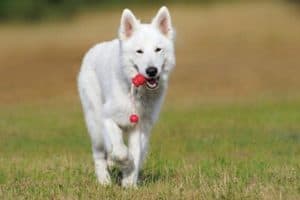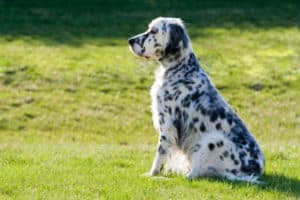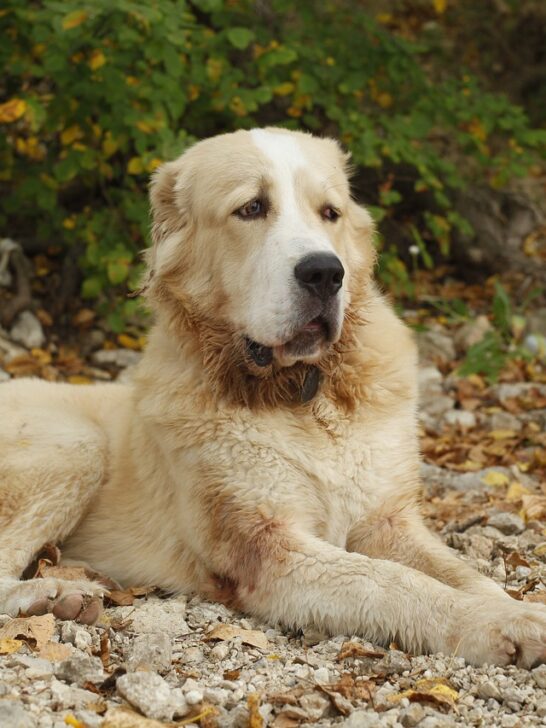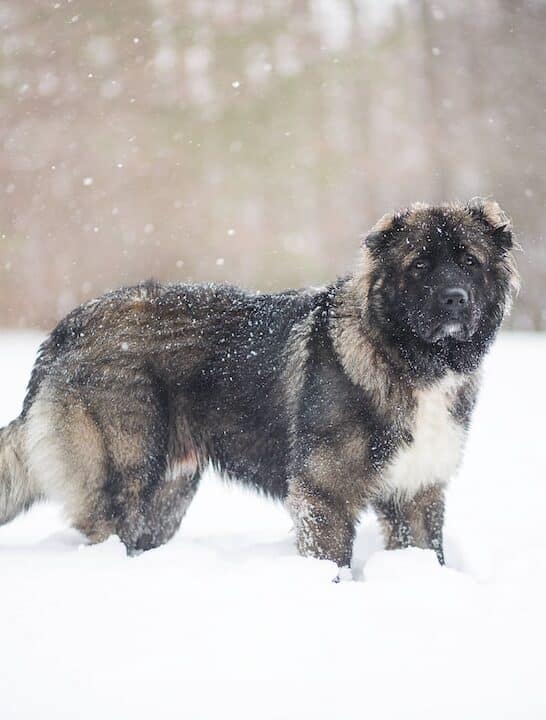How Many Bones Does a German Shepherd Have? Interesting Facts
Did you ever take anatomy and have the teacher tell you all mammals had very similar skeletons. And you looked at the diagrams and said, “Huh?” You could probably easily compare the details of the skeletal structures if the sheer number was not so intimidating.
I was waiting in the veterinary’s office with my pet turtle one day. A five-year-old little girl sat earnestly with her grandfather and their German Shepherd as close to the receptionist counter as they could get.
She looked over at me and asked out of the blue how many bones I thought her Shepherd had. She called him Bongo. Luckily the veterinarian called the family into an exam room before I had to answer.
You may have never wondered, but how many bones does a German Shepherd have? I later found out the answer is 320 bones. You may ask if that is relevant to anyone other than a child.
Although the number of bones a German Shepherd has is not unique among dogs, the way their bones and muscles work together produces a fine companion that has served people in various useful occupations for many generations.
We discuss how various attributes, health concerns, and the number of bones are related in the German Shepherd.
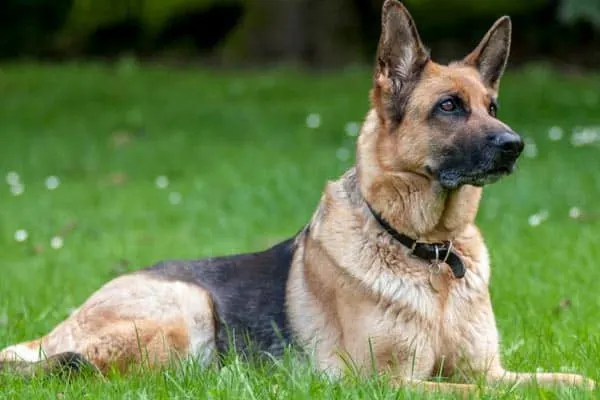
Where do all the bones fit?
You can identify the GSD breed by her head
A dog’s head is one of the most defining characteristics that distinguish him from his ancestor, the gray wolf, and other breeds of dogs.
Humans have had the largest role in the facial and cranial diversity of over 400 dog breeds, selecting for them while breeding to obtain other desirable traits.
The German Shepherd should have a noble head, according to the AKC breed standard. German Shepherds have a classic slightly dome-shaped forehead that you can recognize even in profile. They combine a mildly arched face with a long snout and square jaws.
Cartilage makes up the flap of the ear, and three little bones are responsible for sound transmission and balance. As an aside, most sources do not include these auditory ossicles in the total bone account.
There are three classifications of skulls in dogs based on size and length. Louis Donald wrote about them in a well-detailed GSD breed conformation article. German Shepherds have a medium-sized or mesocephalic skull. They have 42 teeth.
As for comparisons, the English and French Bulldogs have brachycephalic, or short broad skulls and the Borzoi and Collie have dolichocephalic or long narrow heads.
Sirius Dogs says the GSD’s skull is about 40% of her height measured from the floor to the tops of her shoulders.
Proportions of the face and cranium are 50:50. Of particular note about a German Shepherd’s face is the lack of a furrow in the brow present in other breeds. The eyes are medium, and there is a rather wide space between the large upright ears.
German Shepherds achieve expression and greatness in their heads via 50 bones. Captain von Stephanitz purposely aimed to achieve differentiation between the German Shepherd’s skull and the wolf’s head. For the public to more eagerly accept Shepherds in their midst, the dogs could not too closely resemble wolves.
Although the GSD still looks more like the wolf than many other breeds, distinct differences are apparent in the higher zygomatic arches or cheekbones, the smaller jawbone or mandible, and the lower and less prominent ridge or sagittal crest on top of the skull meaning less crushing force in the molars. Moreover, the eyes are set more forward and the orbits allow them to be proportionately larger than a wolf’s.
Neck and chest provide stature and impression
Like all mammals, German Shepherds have seven vertebrae encasing the spinal cord running through the neck. They have 13 pairs of ribs corresponding to 13 vertebrae of the thoracic or chest region.
Nine of the rib pairs connect directly to either side of the breastplate or sternum, composed of eight fused bones. The sternum in dogs is much narrower than a person’s, and canids lack the prominent clavicle or collar bone of humans.
Ribs 10 through 12 connect to the sternum via cartilage while the last rib does not have any attachments and thus is called a floating rib.
Rib injuries can cause forelimb lameness or what looks like back pain in German Shepherds. If you or your medical professional do not have a clear history, lameness from rib problems can go misdiagnosed for weeks.
Seven vertebrae make up the lower back of German Shepherds and another three are fused to form the sacrum over the pelvis.
According to the University of Pennsylvania School of Veterinary Science, the most common area affected by intervertebral disc disease, or a slipped disc, in Shepherds is the seventh lumbar through the first sacral vertebrae.
Herniated discs in German Shepherds are rarest from t1 through t10 (thoracic vertebrae 1 through 10), presumably because of protection from the ligament that runs across these particular vertebrae.
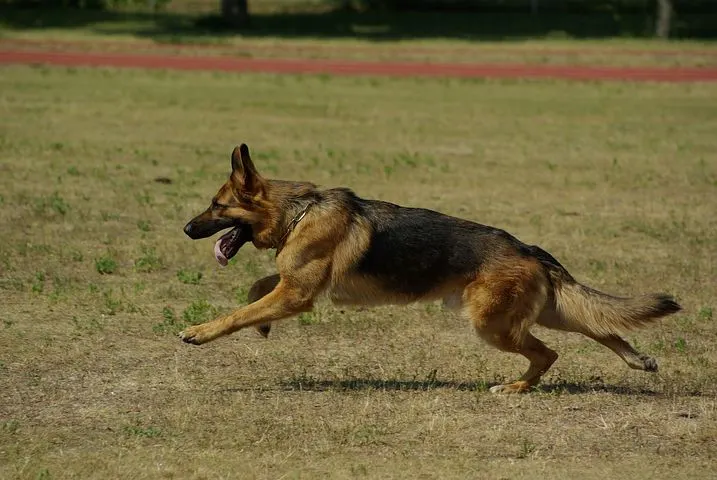
Loose connections of shoulders and forelegs allow extended movement
The withers, or top of the shoulder blades, should be the highest point of the German Shepherd’s back. This point is also where you would officially measure your dog’s height.
The angles of the forelegs are specific, calling for a 45-degree slant of the shoulder blade from the withers, a 90-degree angle where the upper leg bone meets the loose shoulder joint, and a 220-degree angle between the top of the foot, or metatarsus, and the lower leg.
Your German Shepherd’s elbows are potential problem areas for the breed. German Shepherds have a high incidence of elbow dysplasia.
Like your forearm, three major bones make up the elbow of dogs. The humerus, or upper foreleg, meets from the top, and the radius and ulna are below.
The OFA, or the Orthopedic Foundation for Animals, says elbow dysplasia is a developmental disorder of the ulna, either where it creates the upper lip of the elbow joint (anconeal process), or further down and within the joint (coronoid process).
Pain comes from an incongruent elbow joint (elbow does not interlock properly) or fractured pieces of cartilage. Some dogs require orthopedic surgery.
How do you keep feet, pasterns, and hocks straight?
A GSD’s feet should be short, compact, and round, with arched toes and thick pads. German Shepherds carry about 60% of their weight on their forequarters, and thus, their front feet and bones will be larger than the rear.
A German Shepherd’s rear feet include the phalanges, bones of the toes, and metatarsus, equivalent to your foot proper. The front feet also have phalanges and the metacarpal bones, or hand bones. Three bones comprise each toe, with the nail growing from the last segment.
Each metacarpus has five bones. Rare dogs have five metatarsal bones, but German Shepherds usually have four.
The carpus is equivalent to the human wrist and the tarsus to the ankle. A GSD has seven small bones in her carpus.
Seven bones also comprise the tarsus, commonly referred to as the hock. The term pastern, according to The Canine Chronicle, can refer to both the carpus and tarsus in canine anatomy.
German Shepherd feet are not often involved in disease, but they are vulnerable to traumatic injury. Dvm.360.com reports metatarsal hairline fractures are common.
Collaborating sources put the incidence of metatarsal fracture near 12% of all canine broken bones. Metacarpal and metatarsal fractures can be quite severe because of detrimental effects on ligaments.
Hips and hind limbs are the power source
The driving force or motor of most four-legged animals comes from the hind legs. While horse owners encourage their performing dressage horses to carry more of their body weight on their hind limbs to create more forward propulsion, well-built German Shepherds do this naturally.
Bones that make up Shepherd’s ball-and-socket hip joint are the head of the femur or upper thigh and the acetabulum or cup of the pelvic wing on each side.
The pelvic wings, or hip bones, connect with the support of the symphysis and the sacrum. The pelvic symphysis is made of cartilage, and each hip bone has three components – the ischium, ilium, and pubis.
Similar to your calf, Shepherd’s lower leg is made up of a large tibia and a smaller bone, the fibula.
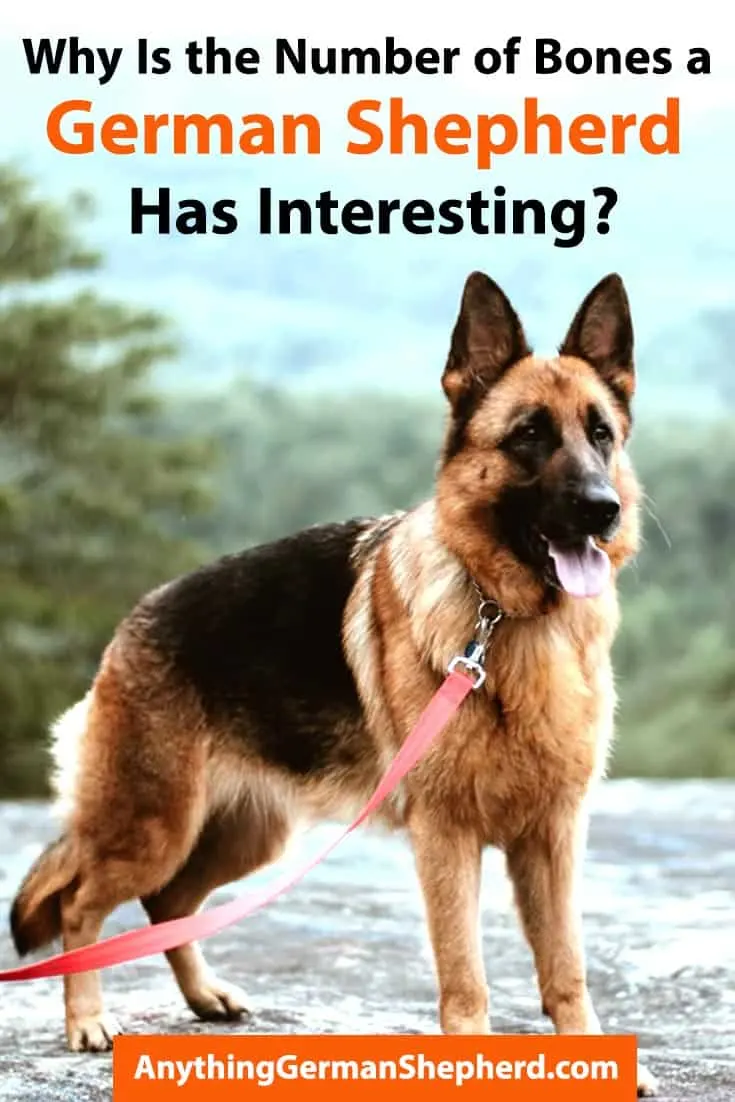
How do you understand the significance of hip dysplasia?
Hip dysplasia is at the forefront of major health issues affecting Alsatians and rightly so. According to the OFA, about 19.4% of German Shepherds are dysplastic. Although not as high as the 50% plus reported for St. Bernards, you are still talking about one out of every five dogs. One positive note is that the numbers are declining, down from over 22% in dogs born in 1990.
Similar to the problem in the elbows, hip dysplasia is a developmental disorder of the head of the femur that causes a misfit of the joint into the socket.
Wear of the protective and lubricating cartilage of the joint occurs from laxity or looseness, resulting in pain, gait abnormalities, and premature arthritis. Severely affected dogs commonly need surgery to alleviate pain.
Three bones are involved in the knee
The hinge joint of the knee or stifle is similar to the elbow in its complexity. It is, however, the largest synovial joint in your dog’s body. The tibia, patella or knee cap, and femur come together to form the knee, but the ligaments are what provide most of the joint’s stability.
How long is your German Shepherd’s tail?
The breed standard for German Shepherds says the tail should reach the hock but not surpass the midway point of the pastern.
Sometimes it is difficult to tell where the tail should end given the modern show dog’s extreme slope in the back, steep pelvic angle, and angulation of the hind limbs. Many of these dogs have tails that reach the ground at rest.
Your German Shepherd’s tail is crucial for balance during exertion and expression. It is an extension of your dog’s spinal cord comprised of 18 to 23 vertebrae depending on length.
Bone Cancer
Bone cancer, or osteosarcoma, is an aggressive tumor originating in the bone. Other tumors that can affect bones are chondrosarcoma and hemangiosarcoma, both cancers that originate from elsewhere.
German Shepherds are a breed that is susceptible to osteosarcoma, which usually affects the humerus or femur but can also affect the jaw or ribs. The most effective treatment is limb replacement surgery or amputation of the affected leg and chemotherapy. Bone cancer can spread to the lungs.
How should a German Shepherd’s bones factor in?
Often we only think about a dog’s bones in terms of what can go wrong. Hip dysplasia and herniated discs are ever-present as sources of concern, especially with large dogs like the German Shepherd.
A German Shepherd has 300 bones in her body and 18 to 23 in her tail for a total of 318 to 323. Most have 320 or 321 bones compared to a human’s 206.
The German Shepherd’s skeleton serves as the foundation for a working breed with strength and versatility in herding, guarding, agility, and rescue operations. Moreover, your Alsatian’s bone structure is the basis of a recognizable look that has inspired decades of German Shepherd owners.
While it is easy to find evidence of the hereditary problems that plague the GSD breed, this video illustrates the results of the harmonious cooperation of healthy bones and muscles.
This dog demonstrates athleticism, speed, and agility always intended for the working German Shepherd.
Also, note the classic head shape and tail length. There is no evidence of hip dysplasia as the dog can readily sit straight and bounce back up. Power is tremendous from the hindquarters.














